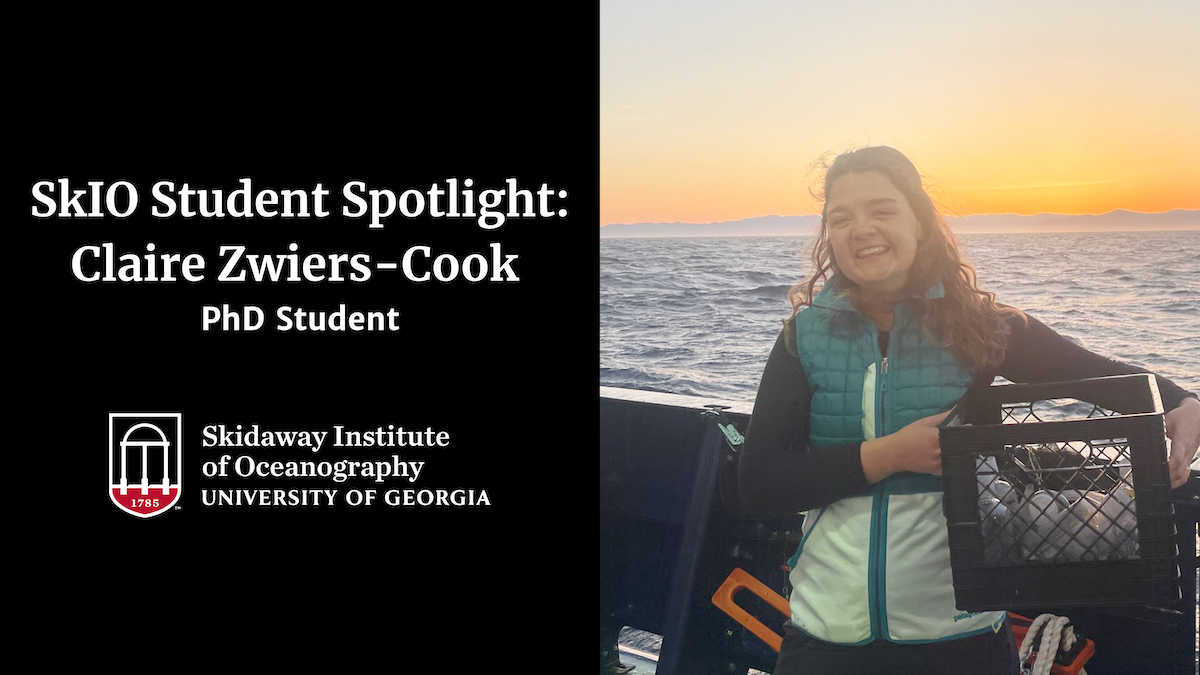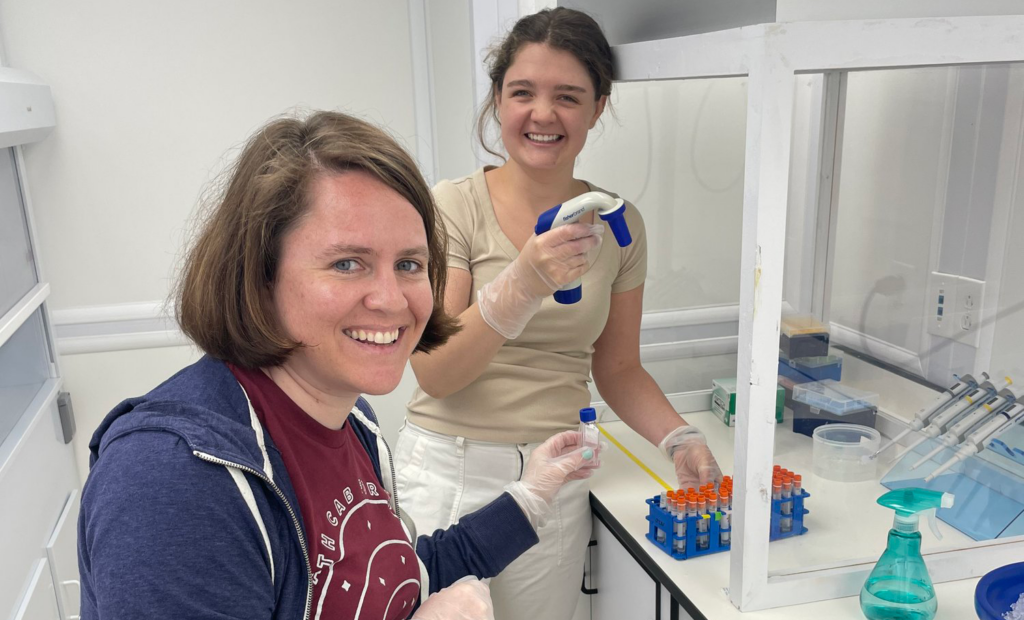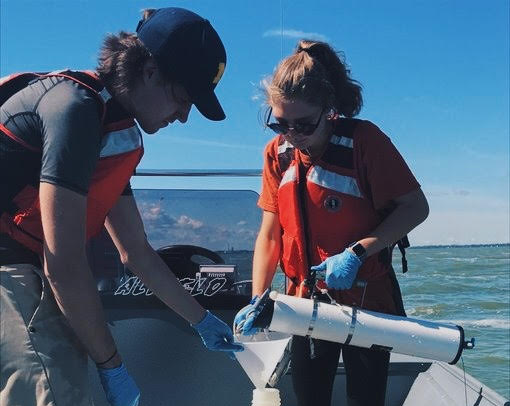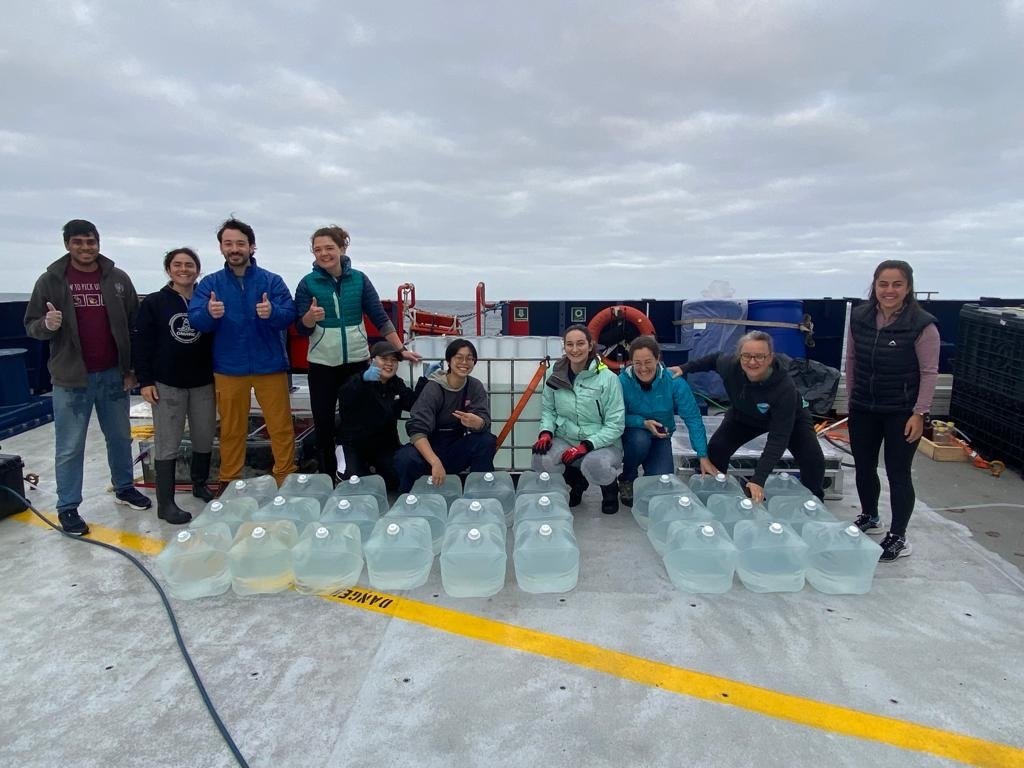
Originally from Grand Rapids, Michigan, just east of Lake Michigan, Claire Zwiers-Cook is a PhD student studying in Natalie Cohen’s lab at the University of Georgia Skidaway Institute of Oceanography (SkIO). Zwiers-Cook received her bachelor’s degree from the University of Michigan, where she double-majored in earth and environmental science as well as evolution, ecology and biodiversity. At the University of Michigan, Zwiers-Cook worked in a lab that studied harmful algae blooms (HABs) in the Great Lakes.
SkIO: What are you researching at SkIO, and who are you working with?
Claire Zwiers-Cook (CZC): I work in Dr. Natalie Cohen’s lab at SkIO, where we primarily research marine microbial ecology. Specifically, my PhD dissertation focuses on mixotrophs, which are organisms that are capable of performing both photosynthesis and phagotrophy (eating things) to gain carbon.
These organisms are special because they can both draw down CO2 through photosynthesis and can also produce CO2 through respiration. These organisms can alter known carbon and nutrient cycles drastically, as previous models only took strict metabolisms into account.
My research thus far has focused on finding mixotrophs in the field and studying them under trace metal limitation in the lab. My hope for my dissertation is that I can provide more measurements of mixotrophy in the ocean so we know where they are most abundant and how much they might be eating vs. photosynthesizing. Additionally, much of our ocean is trace metal limited, so knowing how mixotrophs rearrange their metabolisms under trace metal stress will be vital for future models and studies.

SkIO: What inspired your love of oceanography and, more specifically, your track of study?
CZC: I have always loved being by water. As a kid, my parents couldn’t drag me away from it. I was on the swim team and begged my parents to take me to the beach every weekend. In fifth grade at our school’s wax museum, I chose Rachel Carson. Through this process, I read “Silent Spring” (a tough read for a fifth grader!) and learned a lot about how the environmental movement started.
As a child, the knowledge that we could be hurting the ecosystems I loved was heartbreaking. As I continued my education, I fell more and more in love with science and attempting to solve problems.
At the University of Michigan I fell in love with microbes. In the lab I worked in, I isolated and cultured 44 HAB-causing species from Lake Erie. That experience solidified that science was where I wanted to be. Given the current state of our climate, I wanted to research something related to carbon cycling within the ocean. Mixotrophs were first introduced to me during my senior year of college, and I’ve never looked back. Learning more about how these organisms alter the ways we’ve previously thought about carbon cycling within the ocean has been so challenging, yet rewarding.

SkIO: Why did you choose SkIO?
CZC: I came to SkIO to study with Dr. Natalie Cohen because I loved the projects she had funding for me to work on! Extra bonuses that drew me to SkIO was that it’s right on the water (yay for dolphin watching off the dock!) and the small community. Coming from a large lab and campus at the University of Michigan, I was drawn to the smaller campus. When I visited SkIO I was very impressed by the state-of-the-art instrumentation and support staff, which is hard to come by at a smaller campus!
SkIO: Describe a typical day in your life at SkIO.
CZC: During a typical day, I usually wake up early to get a morning walk or workout in. Then, I head into work. In the morning, I usually work with my cultures. I measure their growth, do any transfers into new media and ensure they’re happy. In the afternoon, I’ll work with some samples from previous cruises I’ve been on, measure additional parameters for my cultures, meet with collaborators, read some papers, or wash the never-ending dishes that come with working in a trace metal clean lab. I like to take a quick break sometime in the day to go look at the water and go on a nice walk.

SkIO: Where do you see yourself in 5-10 years?
CZC: After my PhD, I’ll likely do a postdoc or two! I’m planning to graduate in 2027 and the post docs will likely bring me to the 5 year mark. After that, I’d love to either work at a primarily undergraduate institution teaching, or for NOAA!
SkIO: What do you do for fun, outside of your work/studies?
CZC: I love to read, sew, crochet, garden and go to trivia at Starland Yard. You can usually find me on a dock or at the beach with my friends on the weekends when it’s nice.
SkIO: What advice would you give a high school or undergraduate student interested in a similar track? How can they get to where you are?
CZC: Keep going! Try to find a college that has a program that will allow you to work in a research lab during your undergrad. At the University of Michigan, this program was called the Undergraduate Research Opportunities Program (UROP).
Working in a lab in undergrad helped me get an internship with the National Oceanic and Atmospheric Administration (NOAA) my junior year, which got me on a research vessel for my first time and really solidified my love for oceanography.
On that note, keep your eye on any internships or scholarships that may look applicable for you. The NOAA student opportunities database is often a great place to start for oceanography.
Finally, if at first you don’t succeed, TRY AGAIN! I failed a LOT during my journey. The lab I worked in during undergrad was the only one that accepted me in my UROP program, but it ended up being the best fit and gave me so many opportunities. I applied to many internships during undergrad that I didn’t get accepted for. As long as you’re doing your best and try to keep learning, you’ll find your place.


